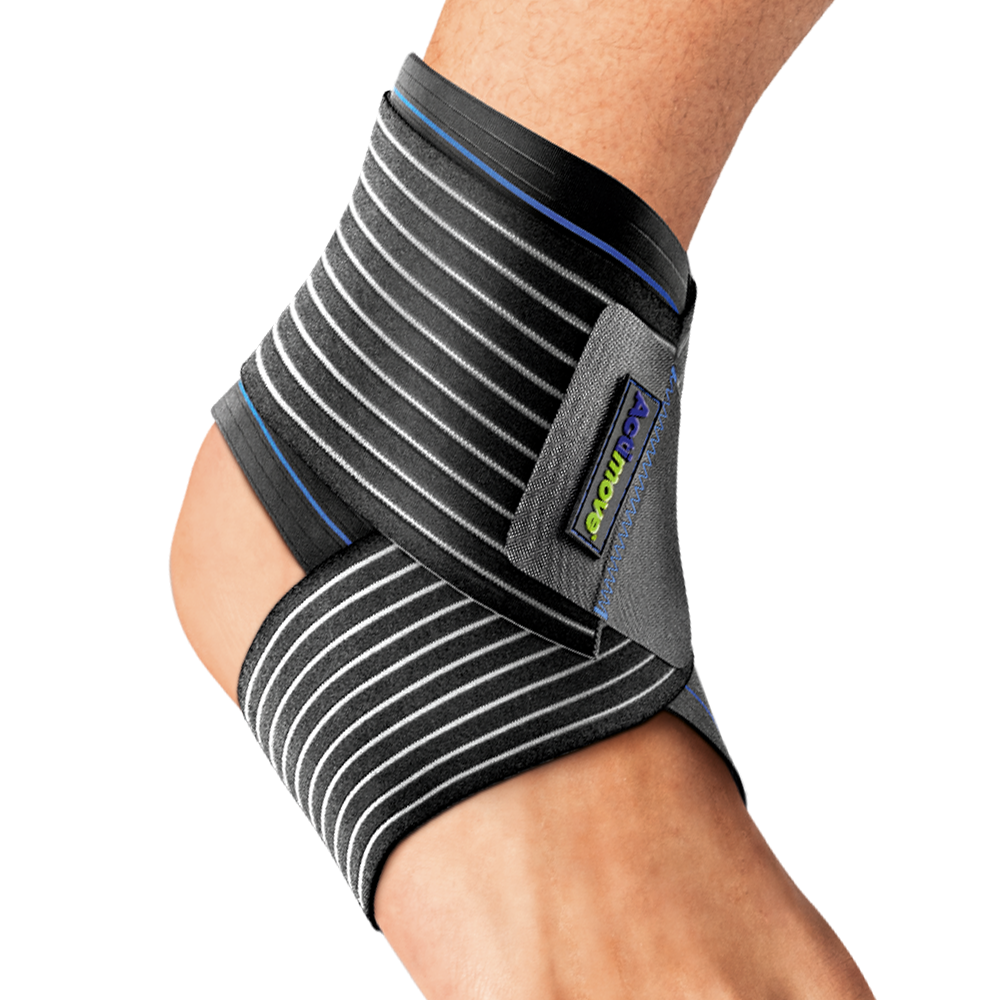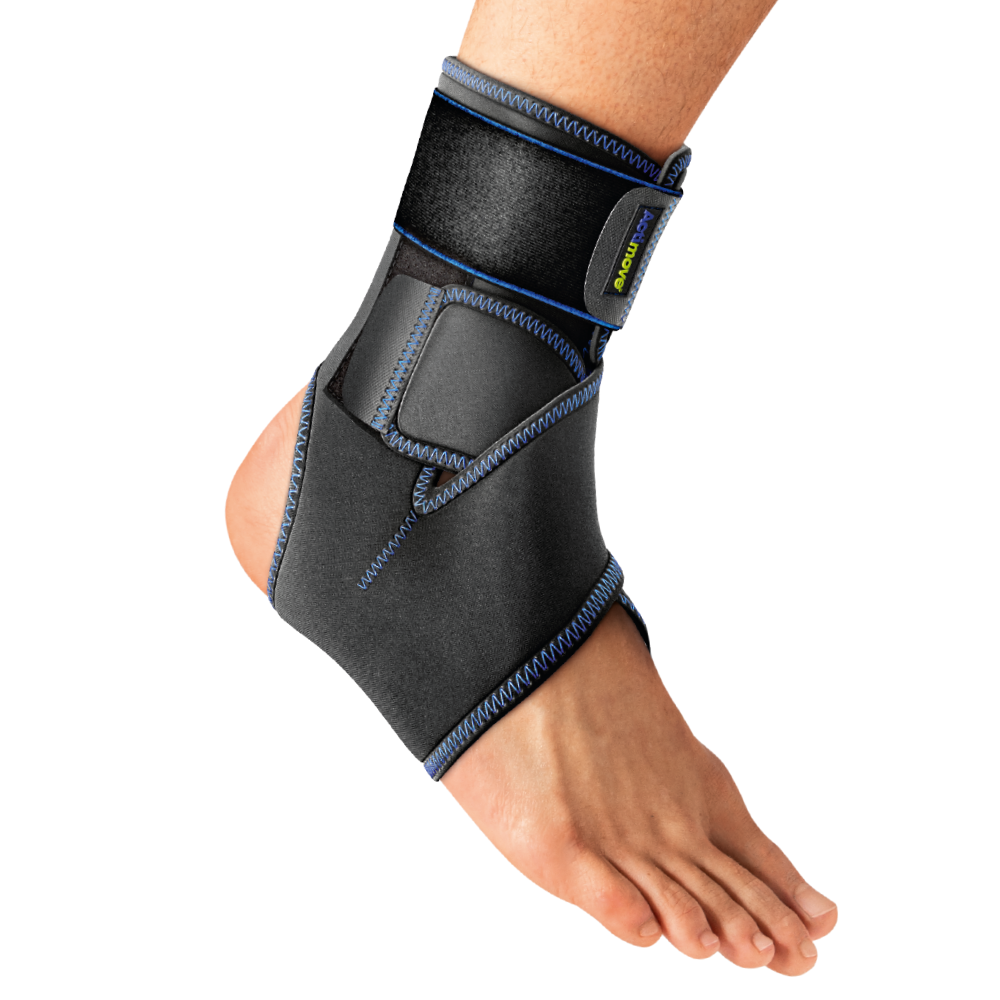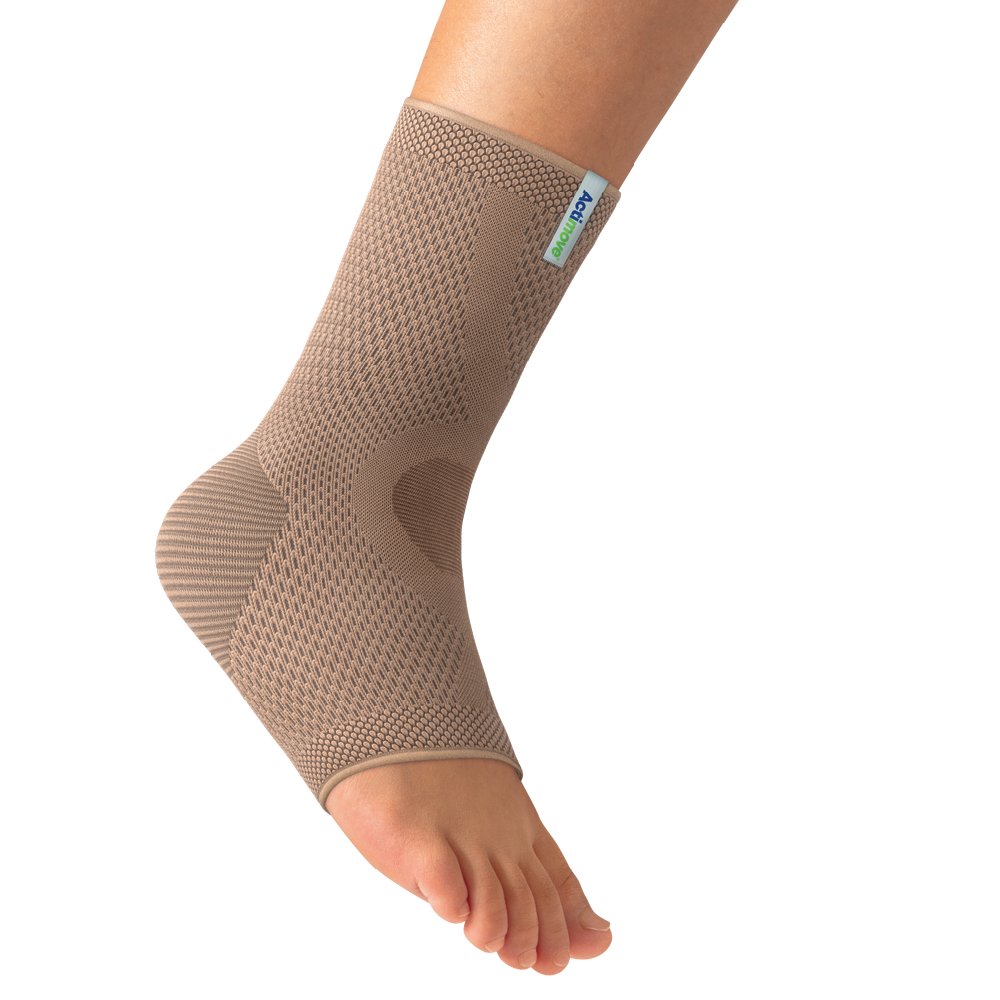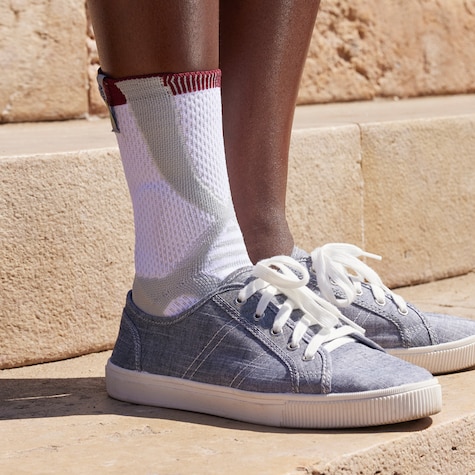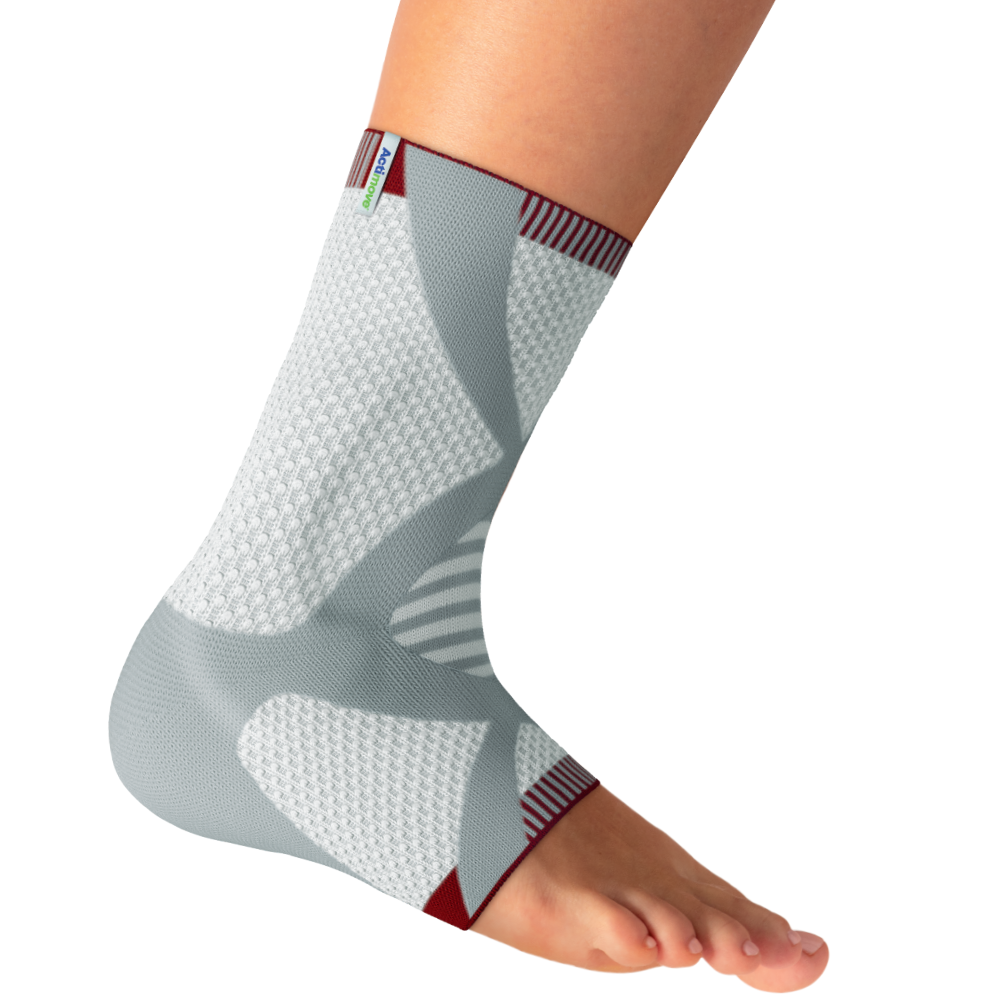Ankle conditions and injuries are common across all age groups and can be caused by acute trauma such as falling or twisting awkwardly during sports or daily activities. Chronic degeneration in this area can also cause painful ankle conditions.


Injuries to the soft tissue ligaments (1), muscles (2), and tendons (3) around the ankle can lead to symptoms such as pain and swelling which can result in difficulty bearing weight on the ankle. Ankle pain may also happen as the result of a chronic condition or a flare-up of an underlying illness. Improper care of a past injury may lead to weakness around the ankle joint.
Some of the most common foot and ankle conditions are:
If you are dealing with pain, stiffness or swelling around the ankle, your doctor or a medical professional may recommend treating the condition with the RICE technique first (Rest, Ice, Compression and Elevation). Learn more about the RICE technique and other ways to care for your sprain here.
Keep reading to discover more about treatment for different ankle conditions, including advice on how to choose the right ankle support.
Deciding when to wear an ankle support or an ankle brace
Ankle supports and ankle braces can be used in a variety of situations, and there are different types you can choose from to suit your condition. They range from simple sleeves to wrap-arounds to products with stabilizing rigid support. The main difference between the product types is the degree of ankle movement limitation.
If you are experiencing pain, an ankle support can help you go about your daily tasks more comfortably. You may want to use a brace or support while exercising or playing sports to prevent re-injury after a recovery period. For example, a device such as Actimove Sports Edition Ankle Support Elastic Wrap Around can help protect your joint from further damage or injury. The wrap-around design features a durable slim fit material that provides adjustable support, making it perfect for protecting your ankle while keeping active.
The Actimove Sports Edition Ankle Support Adjustable is another good choice for painful ankle conditions as it is specially designed for mildly sprained, weak, or swollen ankles. It is fully adjustable so you can choose the level of support and comfort to suit your needs. It is designed to support your ankle while you enjoy sports activities, and the breathable material helps your skin stay cool and dry as you work out.
If you often experience ankle pain from arthritis, tendonitis or just general pain, an ankle sleeve can provide a good level of protection and compression. Compression is good for sore ankles, as it soothes and aids pain relief. Ankle supports can also be worn as a preventative measure to protect the ankle from repeat injuries.
The amount of time you’ll need to wear your ankle support will depend on your specific condition. It’s best to speak to a doctor or medical professional who will be able to give you all the information you need on when and how long to wear your ankle support for.
Supports for ankle sprains
A sprained ankle happens when you injure one or more ligaments in the ankle. Ligaments are bands of soft tissue that connect one bone to another bone, binding the joints together. Ligaments in the ankle joint keep the bones in a correct position and provide stability. Spraining your ankle can be painful and prevent you from taking part in daily activities and sports.
Ankle sprains vary in severity. In minor cases when the ligament is overstretched, you’ll experience mild pain. The pain will be worse if the ligament is partially torn or completely torn, or if there is more than one ligament involved in the sprain.
It’s important to note that ankle sprains are different from ankle strains. Strains affect muscles rather than ligaments.
Symptoms of a sprained ankle include:
- Pain
- Stiffness
- Soreness
- Bruising
- Swelling
- Difficulty walking
If you suspect you have a sprained ankle, speak to a doctor who will be able to confirm the diagnosis.
Supports for chronic ankle instability
Chronic ankle instability may develop after repeated ankle sprains. Your ankle may give way while walking or being active, but it can also happen when you’re standing still. The symptoms of chronic ankle instability include:
- Persistent discomfort
- Pain, tenderness or swelling of the ankle
- The ankle feeling wobbly or unstable
If you are experiencing chronic ankle instability, speak to a doctor or medical professional about treatment or exercises to strengthen your ankle. You may benefit from using an ankle support such as Actimove Everyday Supports Ankle Support to give you reliable support for everyday mobility and it can help prevent re-injury. Its special helix design helps you position the support securely and comfortably.
If you are experiencing chronic ankle instability, speak to a doctor or medical professional about treatment or exercises to strengthen your ankle. You may benefit from using an ankle support such as Actimove Everyday Supports Ankle Support to give you reliable support for everyday mobility and it can help prevent re-injury. Its special helix design helps you position the support securely and comfortably.
Supports for ankle arthritis
Arthritis is a condition that causes inflammation, pain and stiffness in the joints. There are over 100 different types of arthritis that may affect the small joints of the foot and ankle. The major types of arthritis are:
- Osteoarthritis: a ‘wear-and-tear’ disorder that causes the cartilage in the joint to degenerate
- Rheumatoid arthritis: an autoimmune disease where the body attacks its tissues
- Posttraumatic arthritis: similar to osteoarthritis, this condition can develop after an injury to the foot or ankle.
Supports for Achilles tendinitis
Achilles tendinitis is a common condition that happens when the Achilles tendon becomes swollen or inflamed. The Achilles tendon is the largest tendon in the body. It connects the calf muscles to the heel bone and is used for walking, running, jumping, and climbing. The Achilles tendon is robust but is prone to tendonitis through overuse. You can develop Achilles tendinitis through intense exercise, which can cause inflammation. Symptoms of Achilles tendinitis include:
- Pain and stiffness along the Achilles tendon that worsens with activity
- Severe pain in the area after exercise
- Swelling
- Pain in the heel when you stretch or when you wear shoes
In most cases of Achilles tendinitis, non-surgical treatment options will provide adequate pain relief, although it may take a few months for symptoms to completely subside. In the meantime, you may like to wear a support such as Actimove Professional Line TaloMotion Ankle Support. This device offers anatomically shaped Achilles tendon support with 3D knitting technology. It provides stability, and integrated pressure pads to help pain relief of Achilles tendinitis. The firm, viscoelastic heel wedges provide additional relief to the Achilles tendon and are reusable after cleaning with water.


